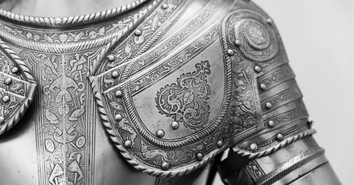10 Things You Should Know about the Bible’s Teaching on Men and Women

This is a guest post by Andreas J. Köstenberger and Margaret Elizabeth Köstenberger, authors of God's Design for Man and Woman: A Biblical-Theological Survey. This post is part of Crossway's 10 Things You Should Know blog series.
1. We were created male and female by divine design.
According to the Genesis creation account, God created humanity male and female (Gen 1:26–28). Maleness and femaleness are creational, not contractual. They are divinely instituted rather than socially defined. Thus our gender identity cannot simply be renegotiated the way in which we refinance a mortgage or reschedule an appointment. God created us, and we are his creatures, both men and women.
2. We were created male and female in God’s image.
Humanity’s binary gender design as male and female reflects in some mysterious way the nature of God. While sharing a common humanity, the man and the woman are unique and complementary rather than identical. This complementarity, in turn, reflects a facet of God’s own nature. God, too, is a unity within diversity (three in one, equal in personhood, distinct in role). This unity in diversity is beautifully reflected in human marriage, where the two become one flesh (Gen 2:24–25).
3. The man was created first and given the responsibility to lead.
Scripture teaches that first the man was created by a direct divine act of creation and given the responsibility to lead; subsequently, the woman was created by God from the man (Gen 2:5–9) and for the man (Gen 2:18–20). He is to subdue the earth and is given the name “Adam,” which also serves as the name of the entire human race. God calls the man to account and holds him responsible for the fall.
4. The man and the woman are partners in exercising dominion over God’s creation.
The man and the woman jointly receive God’s mandate to multiply and fill the earth, and to subdue it, exercising dominion. God creates the two as genuine partners, and this partnership envelops the man’s leadership and the woman’s support and participation in such a way that the two work in tandem, with complementarity. This genuine partnership can be fully reflected today where men exercise godly leadership without domination and encourage women’s robust participation within biblical boundaries.
5. Who we are as men and women defines the core of our existence, not merely its periphery.
Having been created male and female, we are husbands and wives, fathers and mothers, sons and daughters, brothers and sisters. Thus the way in which we live our lives is in and through our divinely created gender identities. These gender identities, in turn, are not merely superficial but run deep, affecting who we are as persons, family members, church members, and citizens. While the gospel extends to all of us, we do not cease to exist as men and women.
6. The fall distorted, corrupted, and confused who we are as men and women.
Men and women are meant to live out gender diversity in unity. The fall destroys this prospect. Male and/or female domination are some of the extremes resulting from fractured gender relationships. It is only those redeemed in Christ who can hope to recover and live out God’s intended design. We should remember that the ultimate problem is sin, not a faulty gender design or a corruption of a perfect original. That said, even in its fallen state humanity still displays glimpses of the divine design.
7. God’s design is best.
God’s design of humanity as male and female cannot be improved upon! God’s ways are far superior to our own. God’s design for man and woman—expressed in male leadership with male-female partnership—is an expression of his beauty, wisdom, and goodness. Through faith, and faith alone, we can appropriate God’s power to live out this design individually and in relation to each other.
8. The Bible’s teaching on God’s design for man and woman is consistent and coherent.
From Genesis to Revelation, the Bible paints a unified picture of what it means to be a man or a woman. The dual pattern of male leadership and male-female partnership pervades all of Scripture: from creation to the fall to redemption in Christ and to the final consummation. For a thorough discussion of this, see our book God’s Design for Man and Woman: A Biblical-Theological Survey.
9. Every generation must model and explain God’s design for man and woman to the next.
God’s way is for men to lead their families, fathers to mentor their sons in biblical, God-honoring masculinity, and for mothers to mentor their daughters in biblical, God-honoring femininity. Not only is this to happen in the natural family, it is also to take place in God’s family, the church (e.g., Titus 2) especially where family structures are broken. How are you and I preparing our sons and daughters for living out their God-given design as men and women? How are our churches equipping those without role models?
10. Current cultural trends reflect humanity’s brokenness and deep-seated rebellion against the Creator and his design for men and women.
Current cultural trends such as same-sex marriage or transgenderism are only symptoms—the result of humanity’s rejection of its Creator (Romans 1). Autonomous, libertarian human reason insists on its right to define itself in opposition to and rebellion toward God. Sadly, this root rebellion will incur eternal judgment unless people trust in Christ. As believers, by grace and through faith, we have the privilege to point to God through living out his wise and beautiful design before a world that languishes in sin and desperately needs salvation.
Written by Andreas and Margaret Kӧstenberger authors of God's Design for Man and Woman: A Biblical-Theological Survey. Originally appearing on Crossway.org.
Andreas (PhD, Trinity Evangelical Divinity School) and Margaret Kӧstenberger (ThD, University of South Africa) are the authors of God’s Design for Man and Woman. Andreas is also the founder of Biblical Foundations™ and the author (with David W. Jones) of God, Marriage, and Family. Margaret has written Jesus and the Feminists. They have four children and live in Wake Forest, North Carolina.
Publication date: August 1, 2016
Originally published August 01, 2016.





